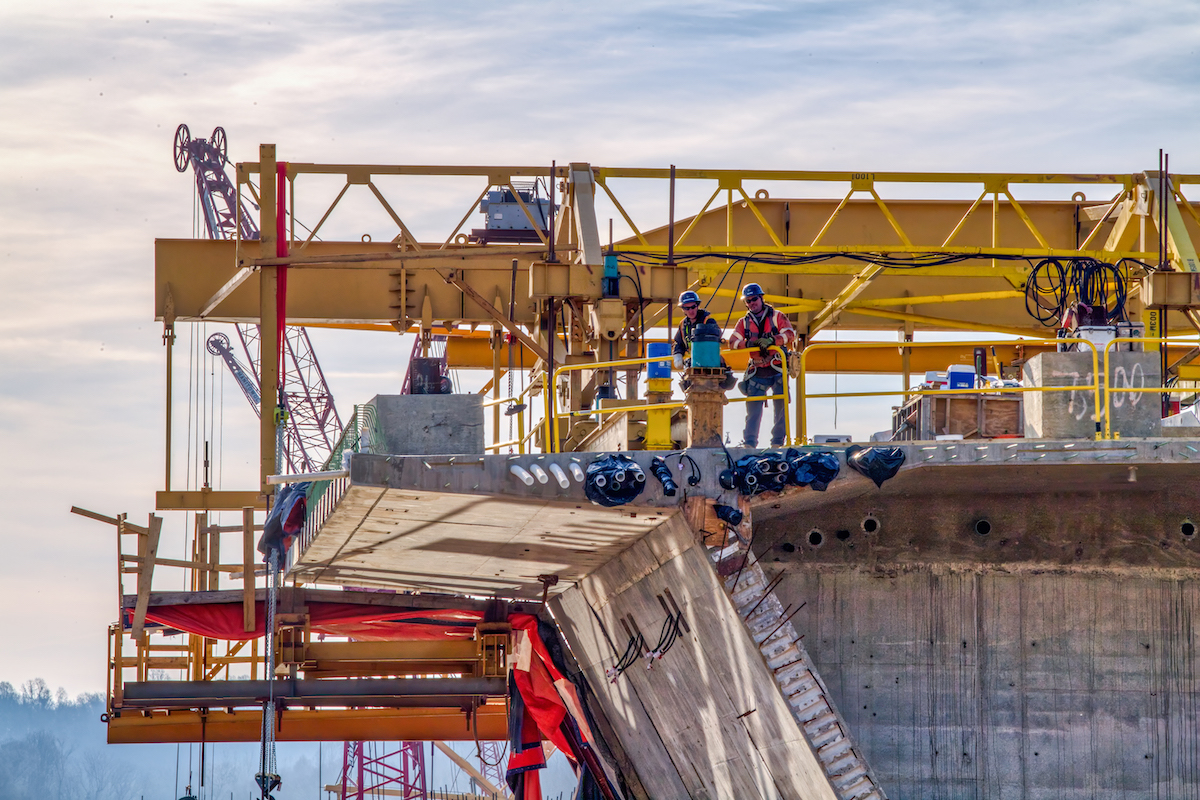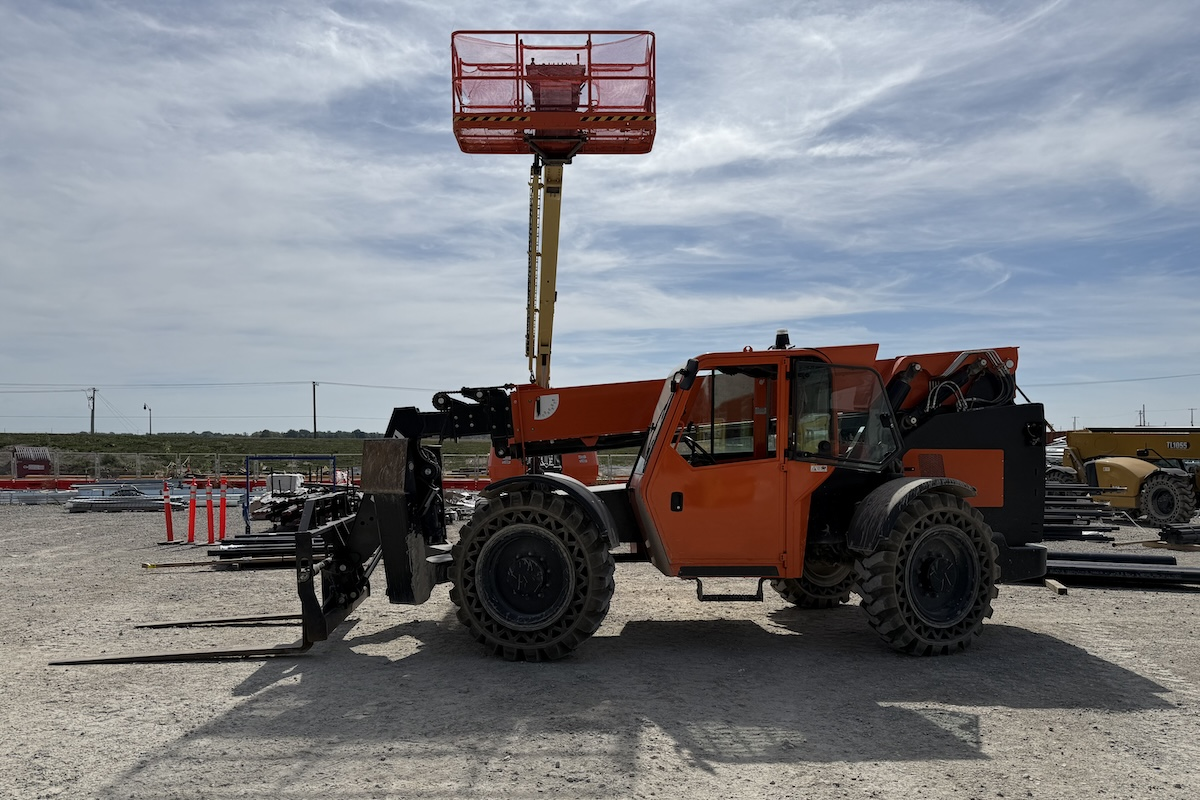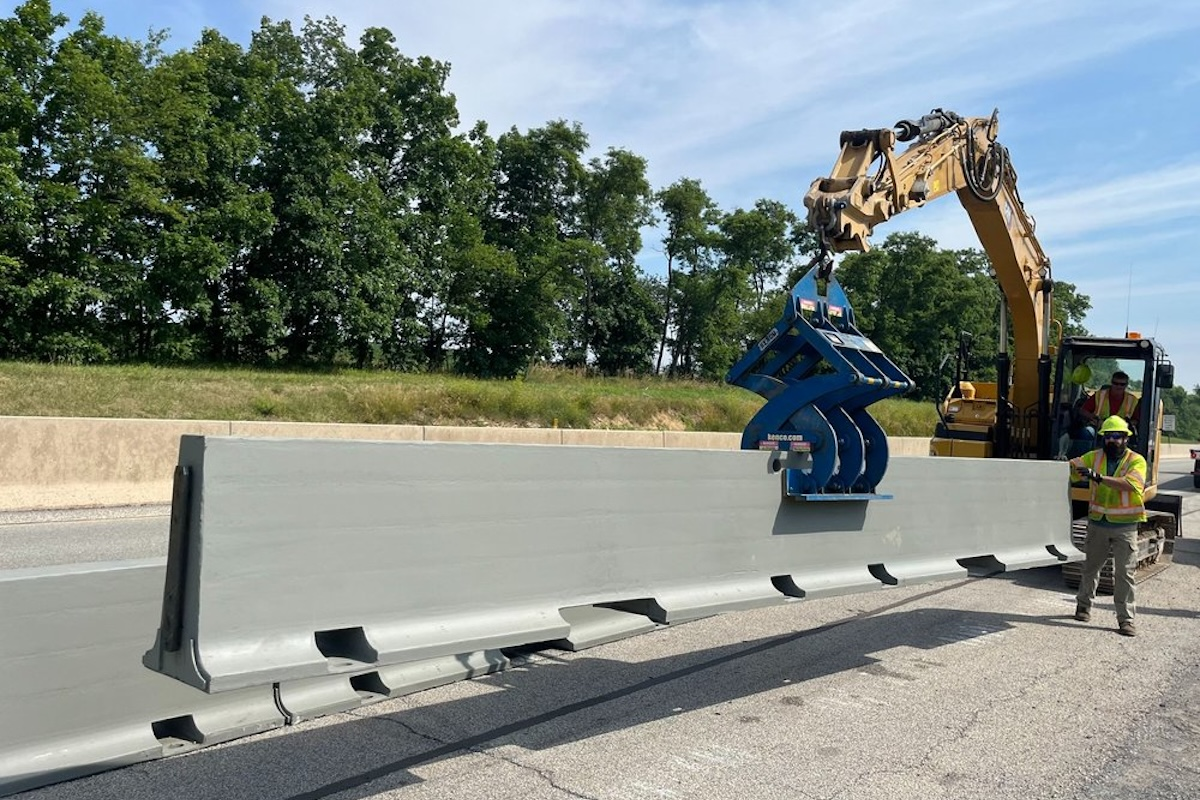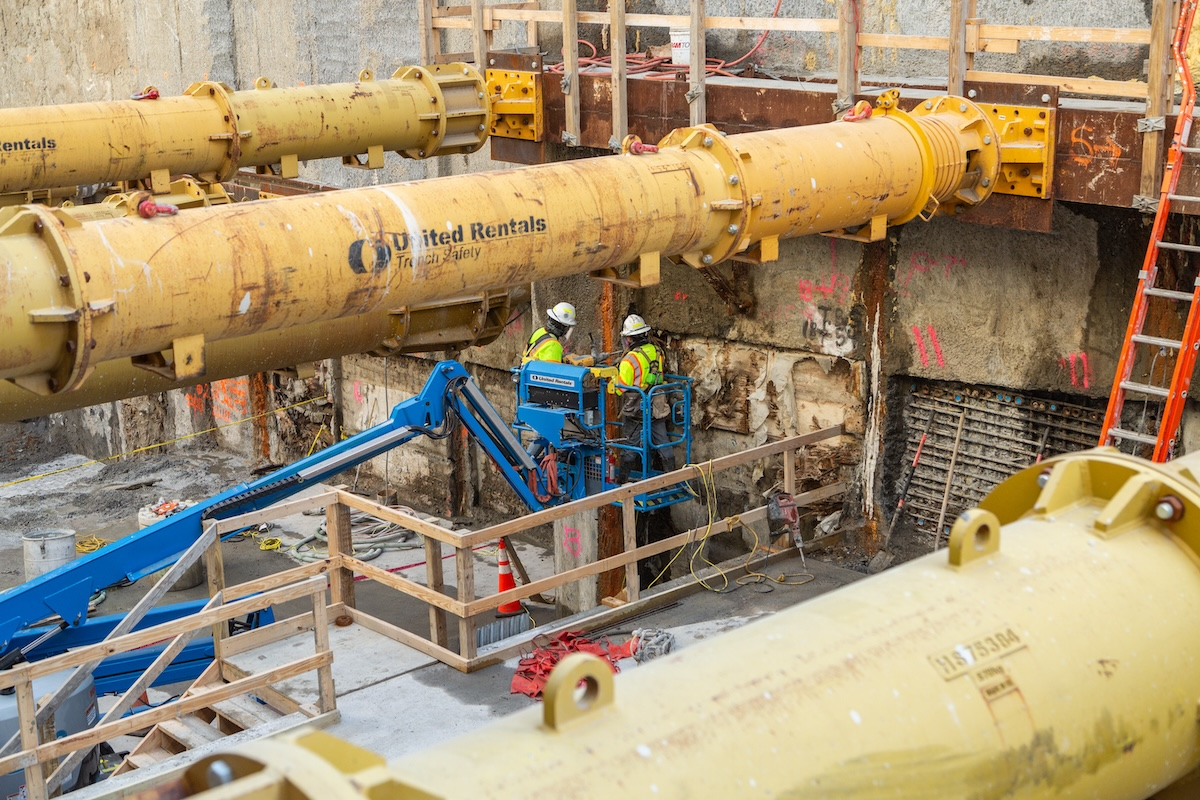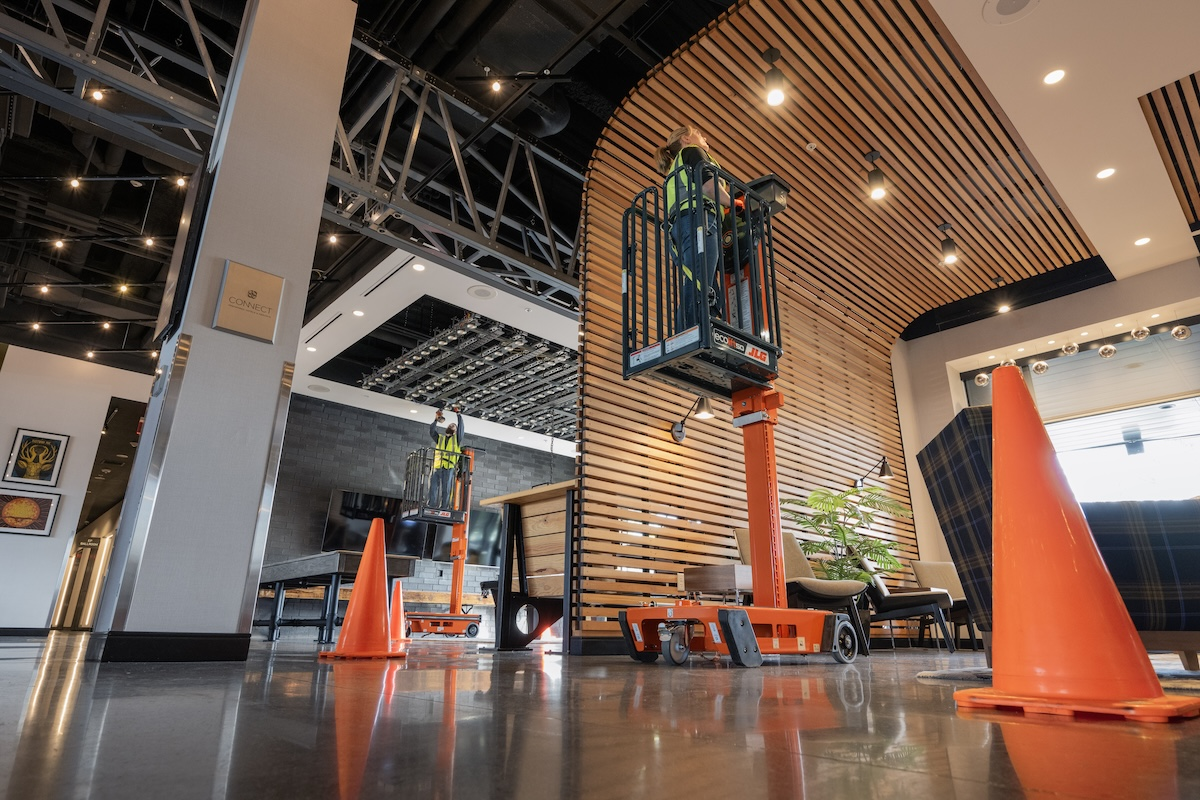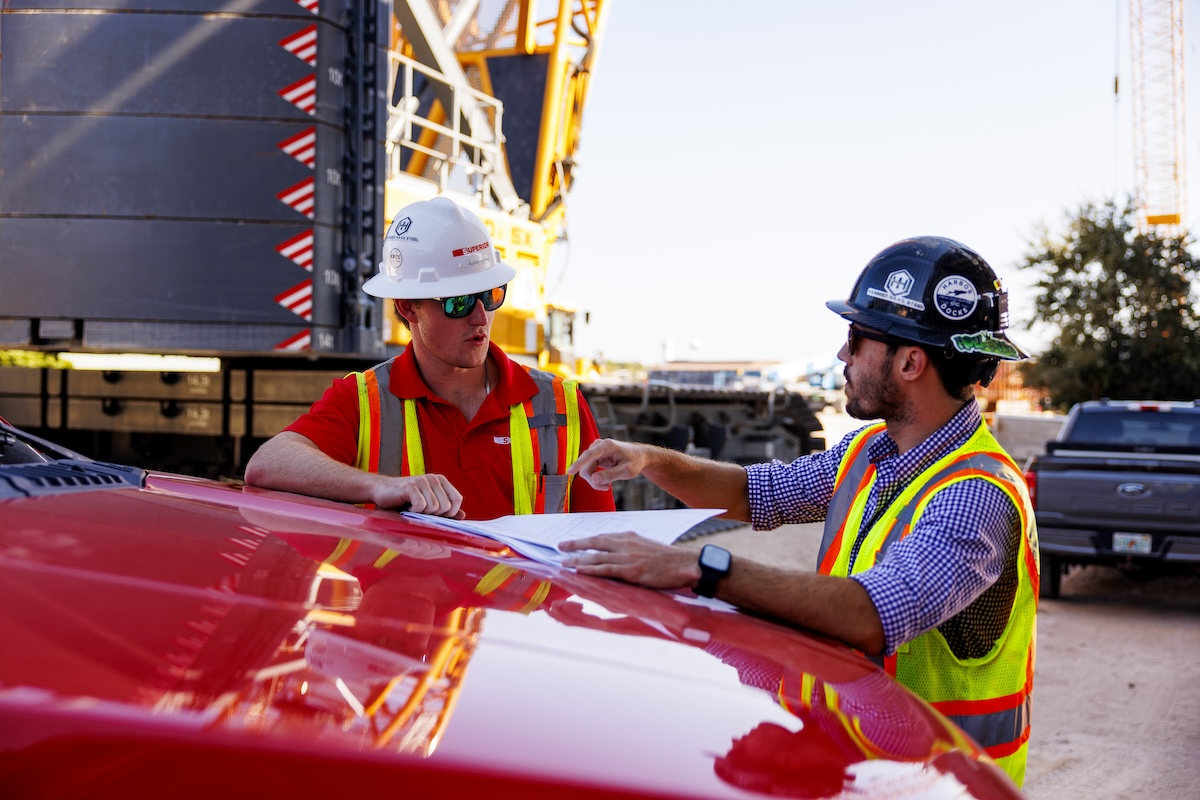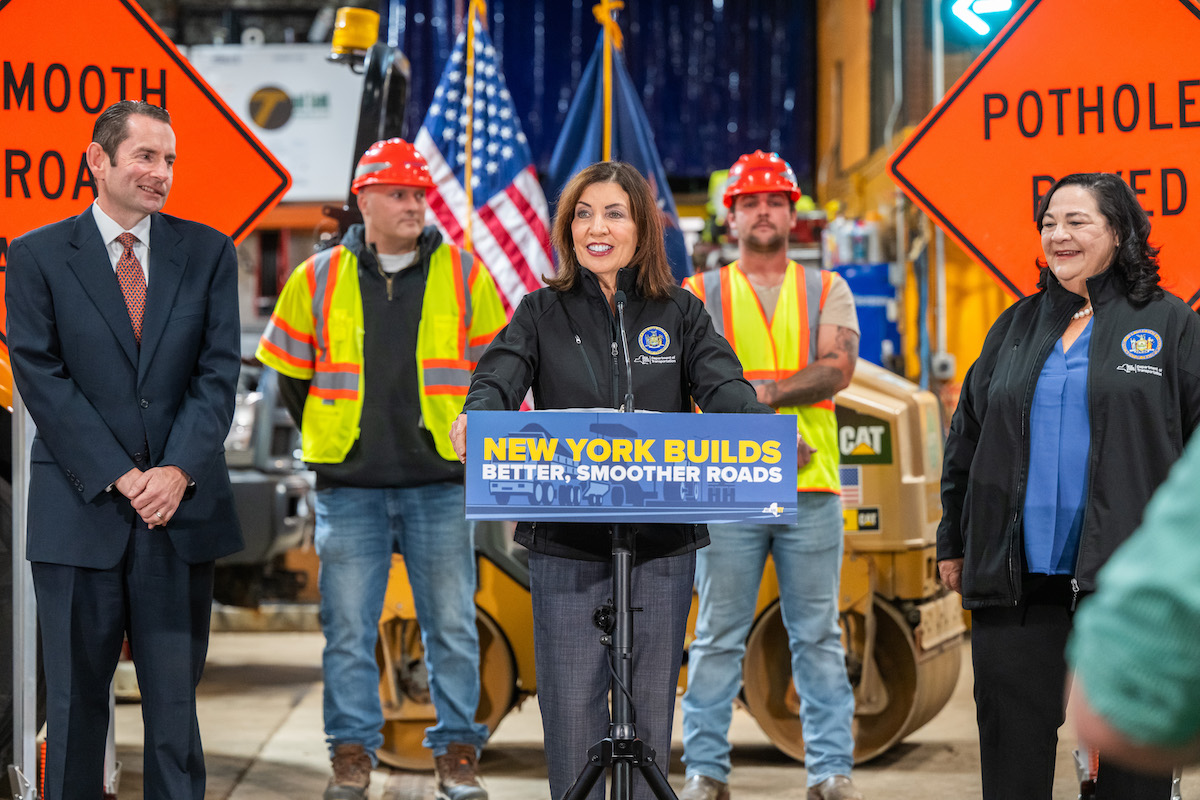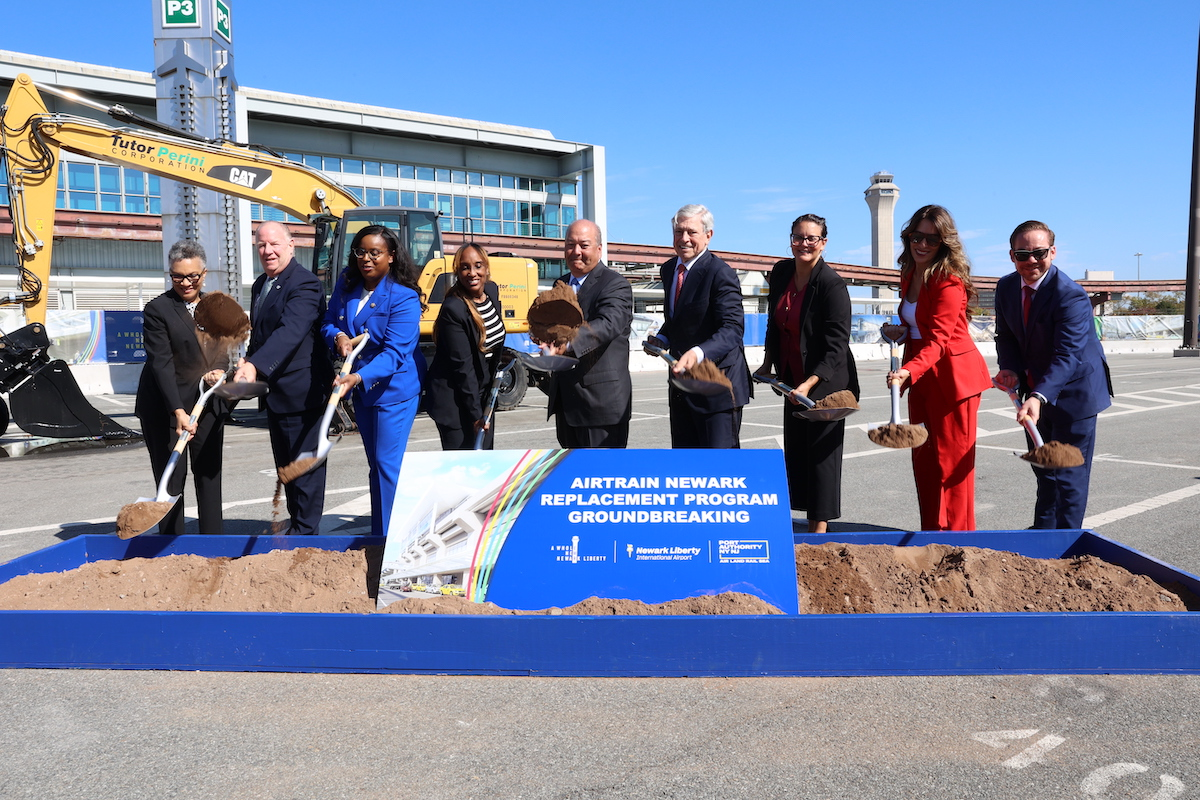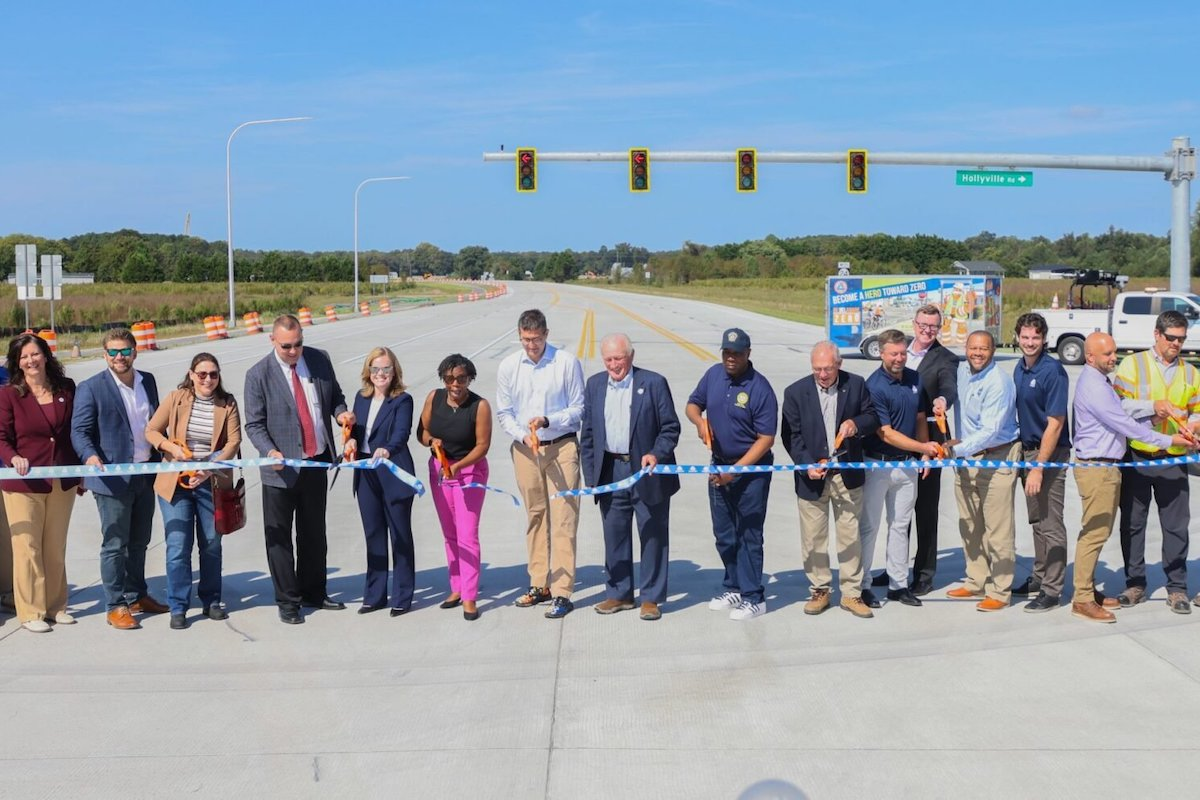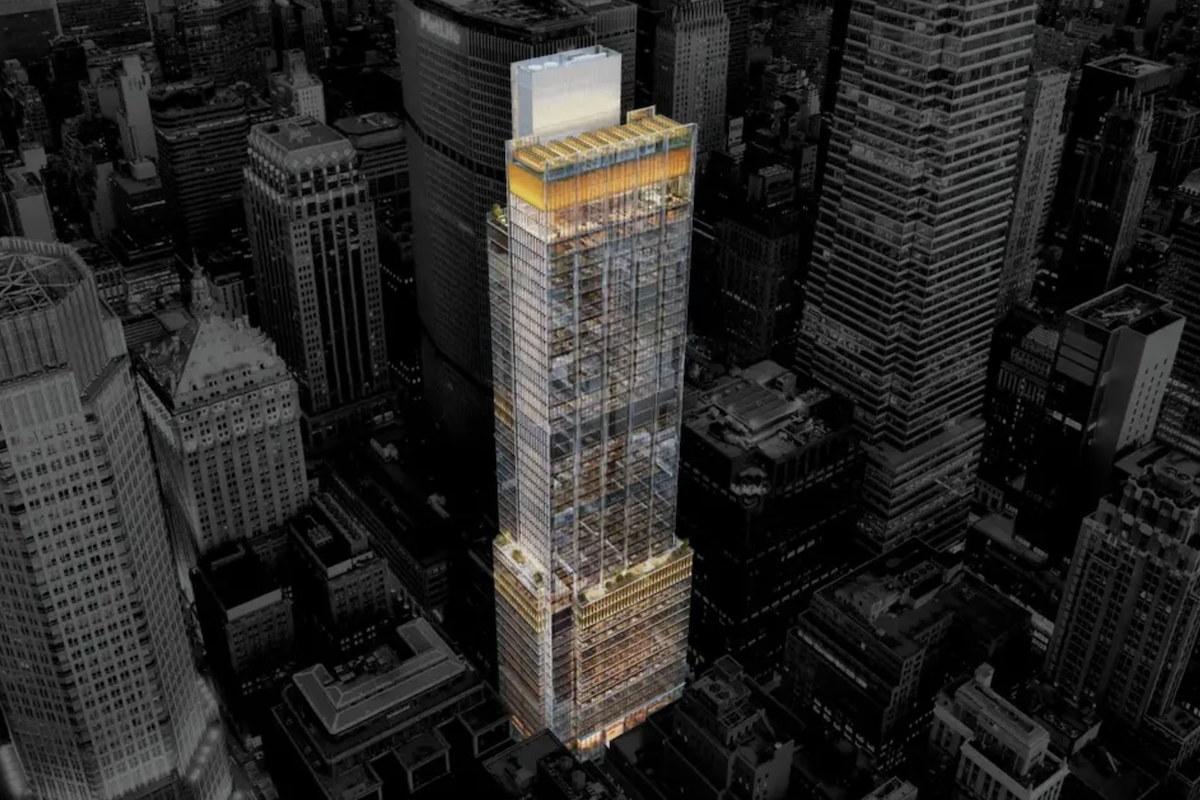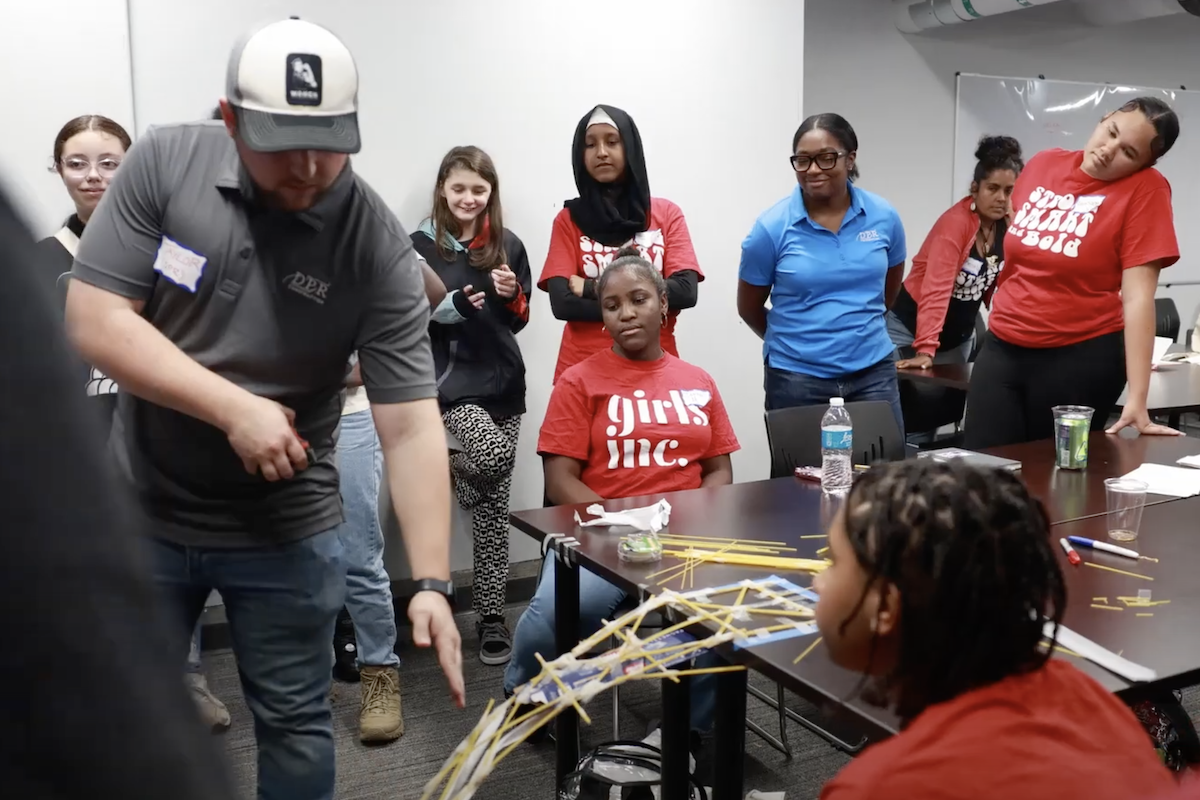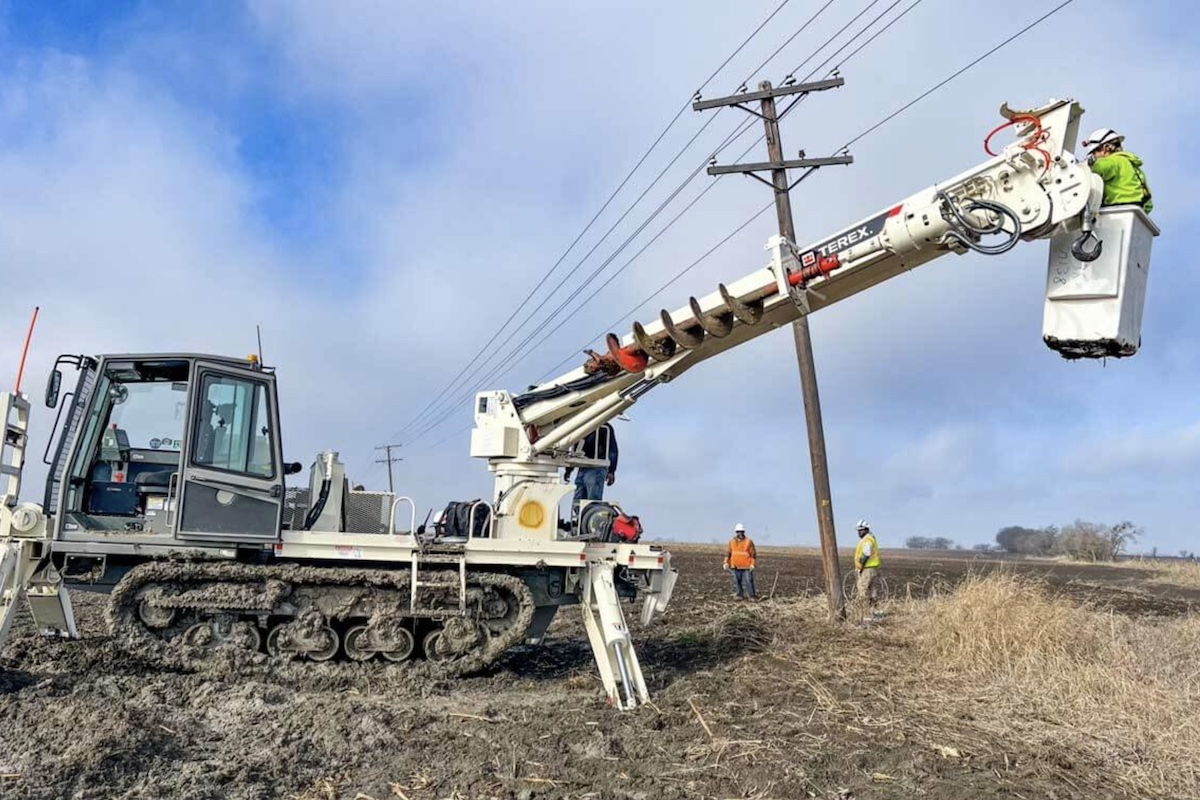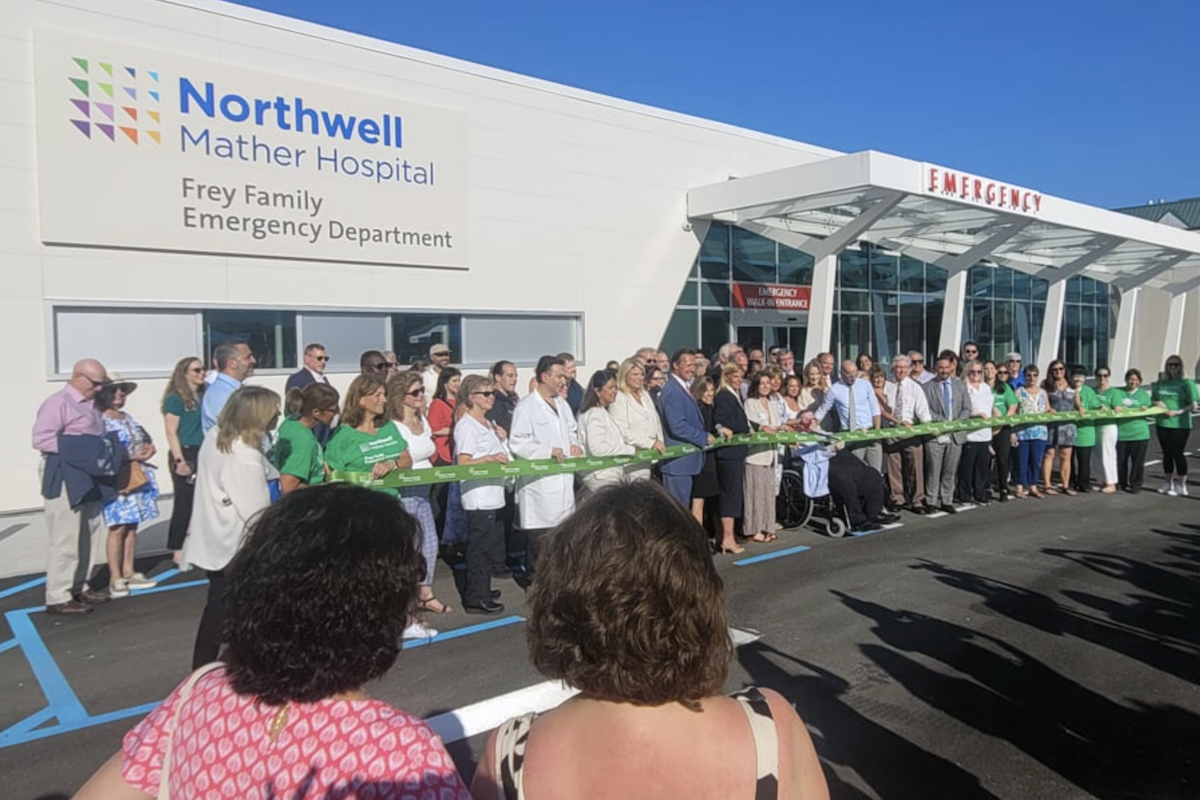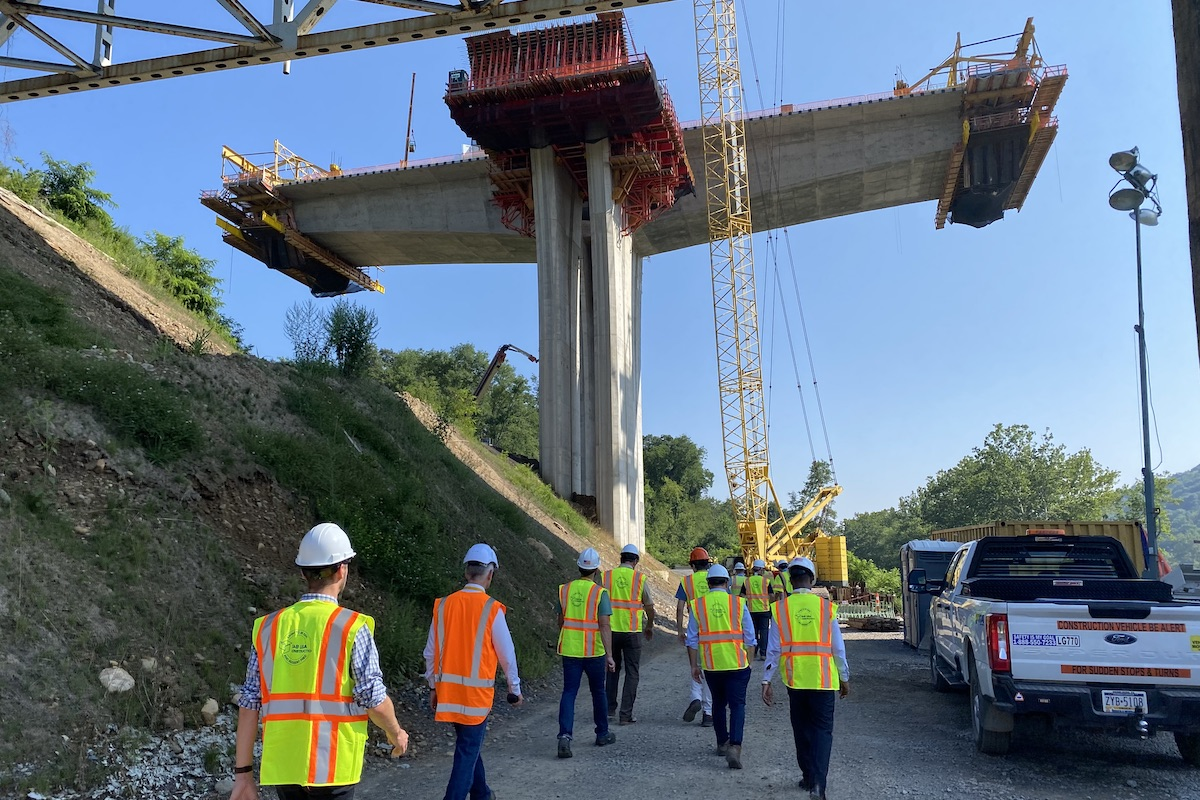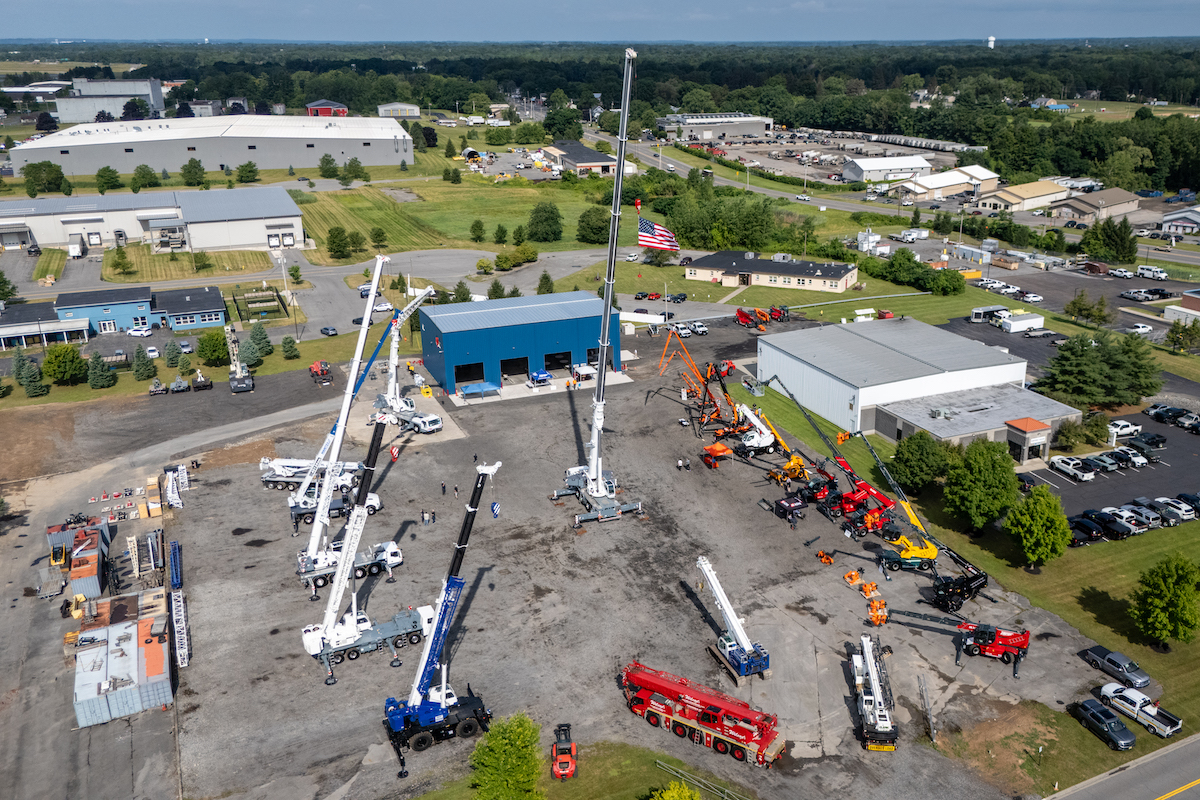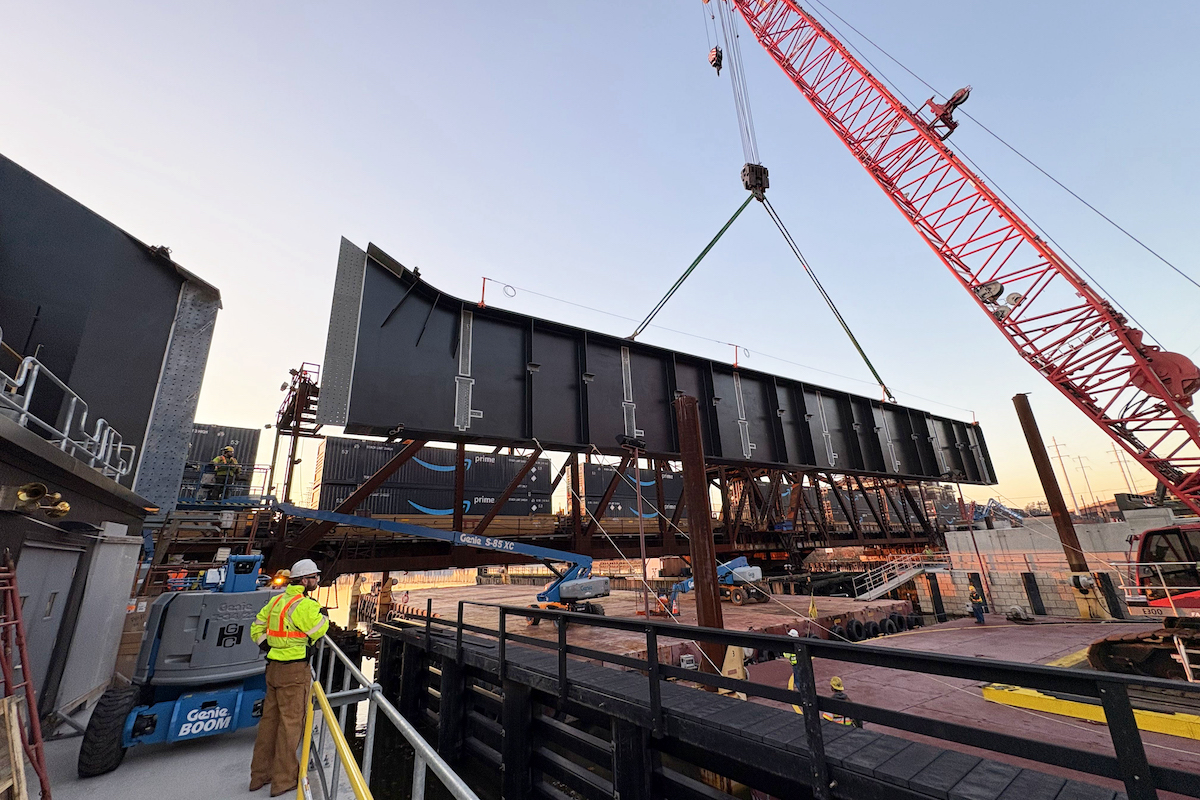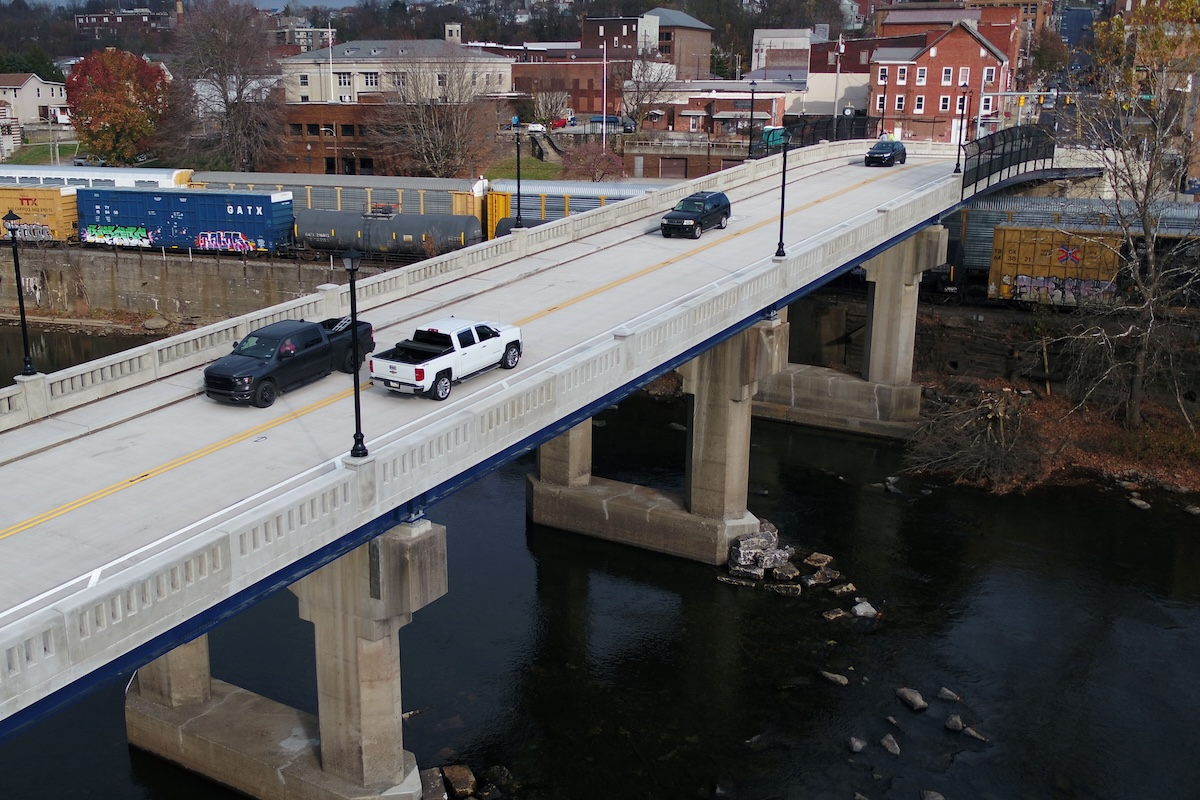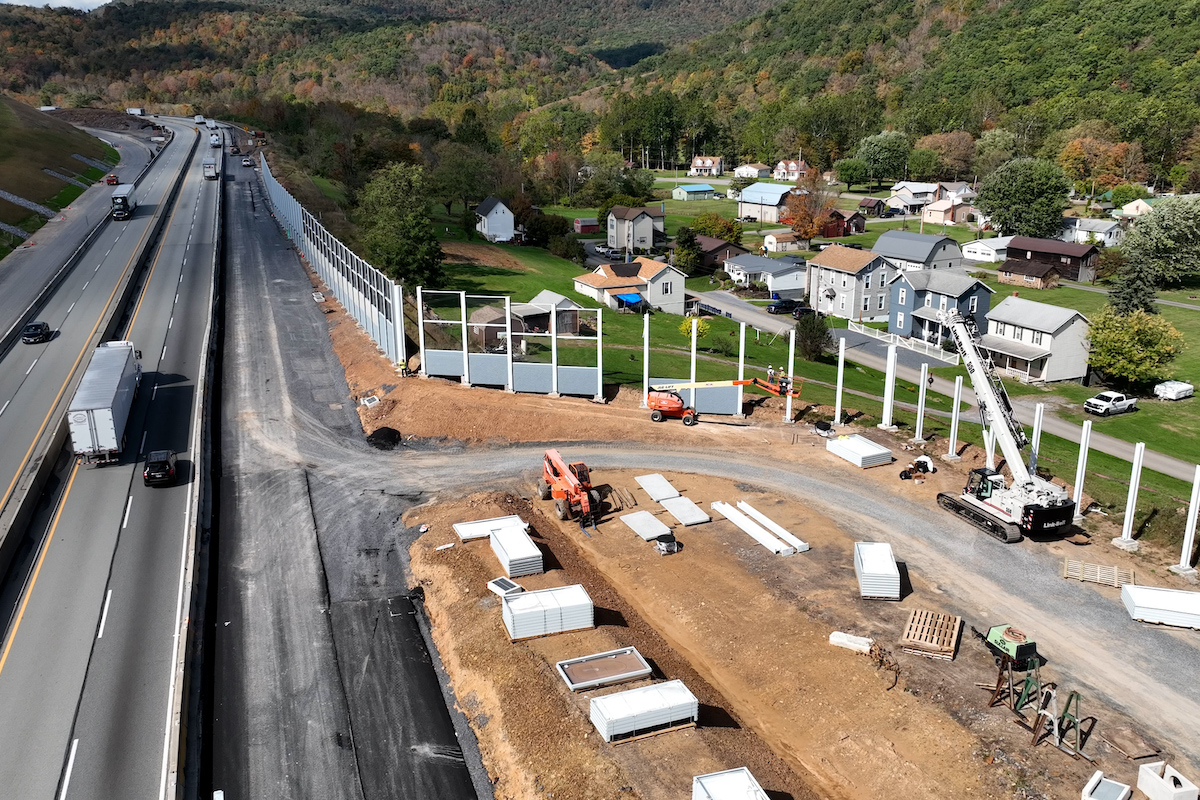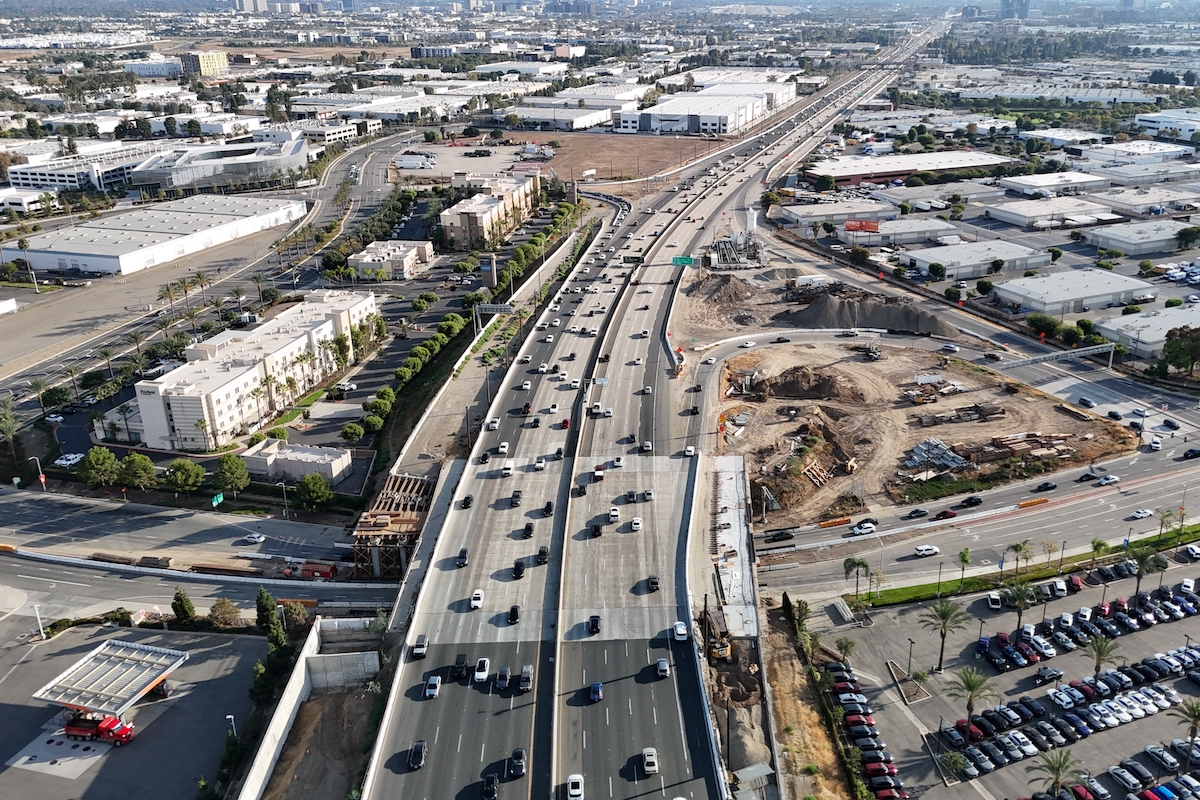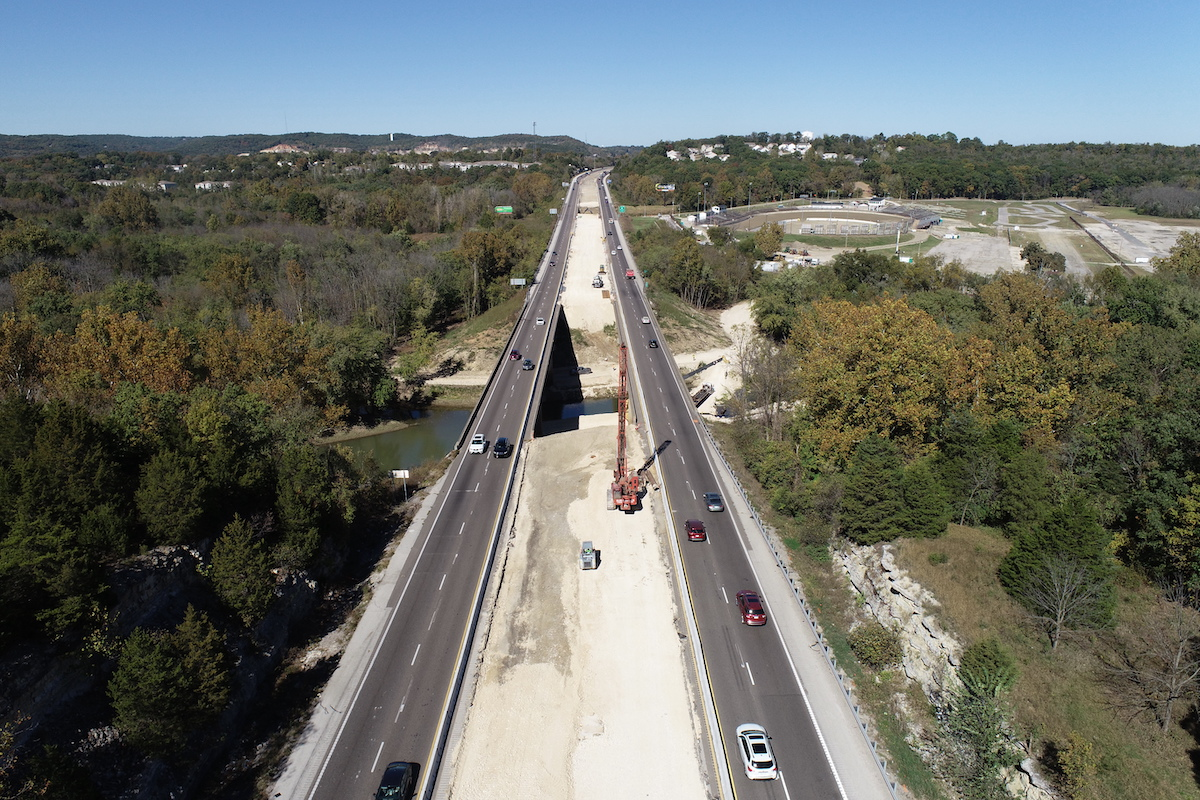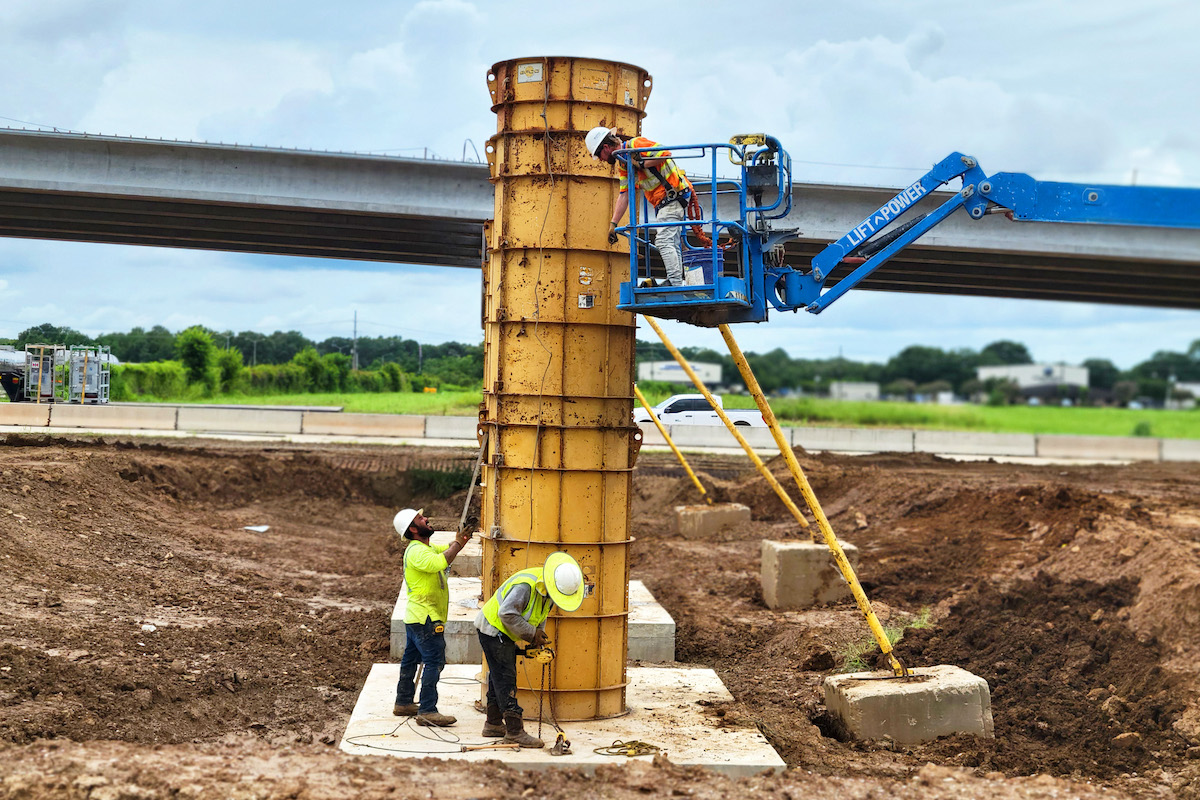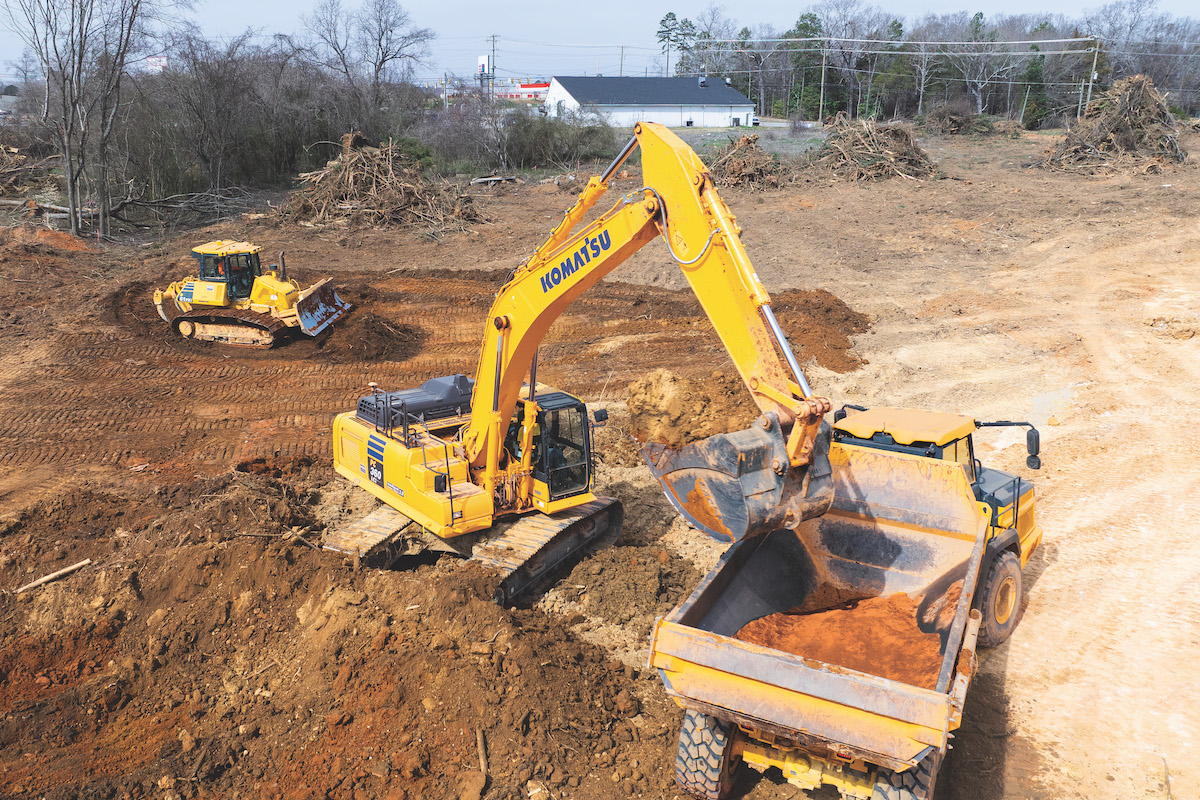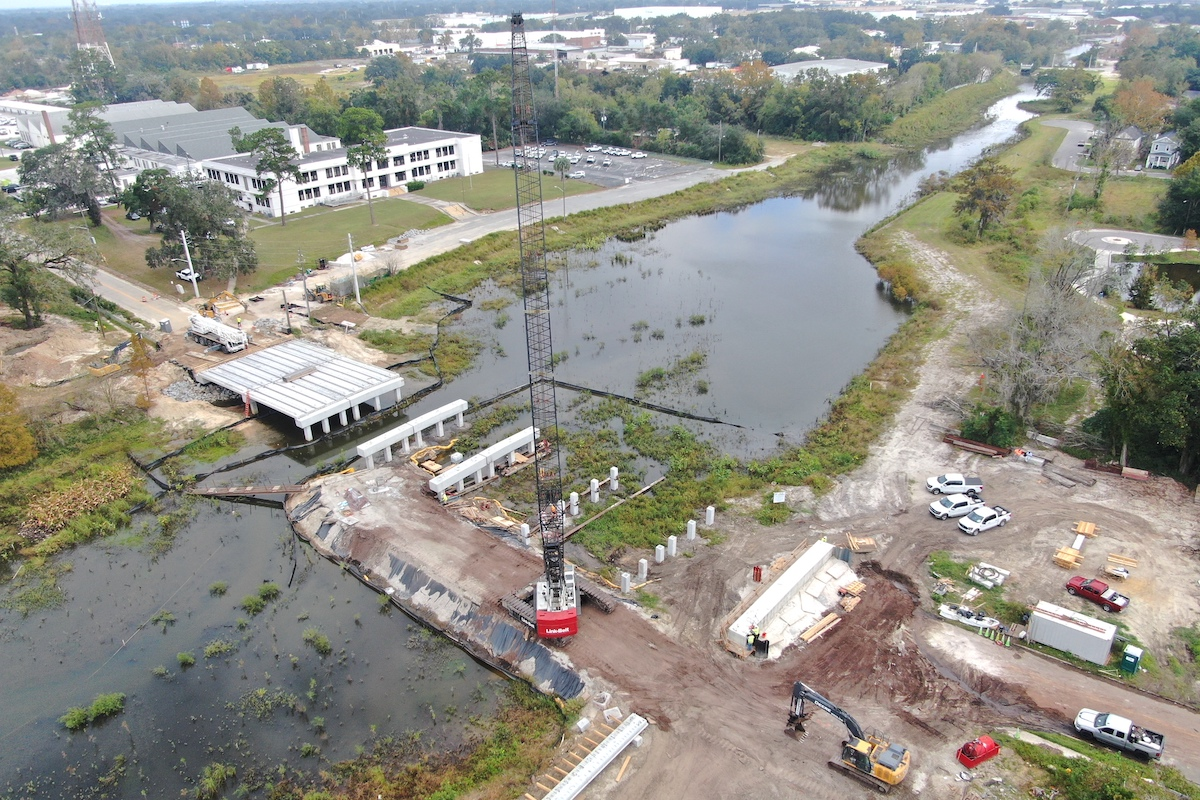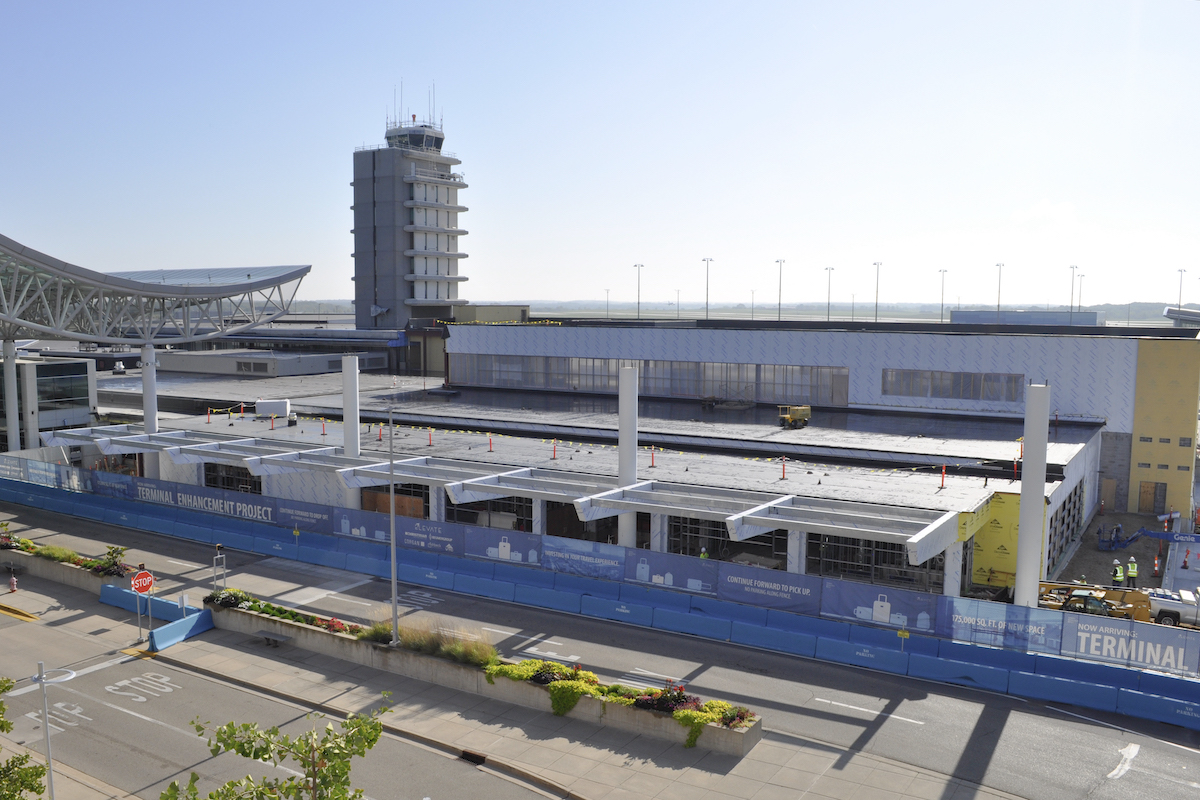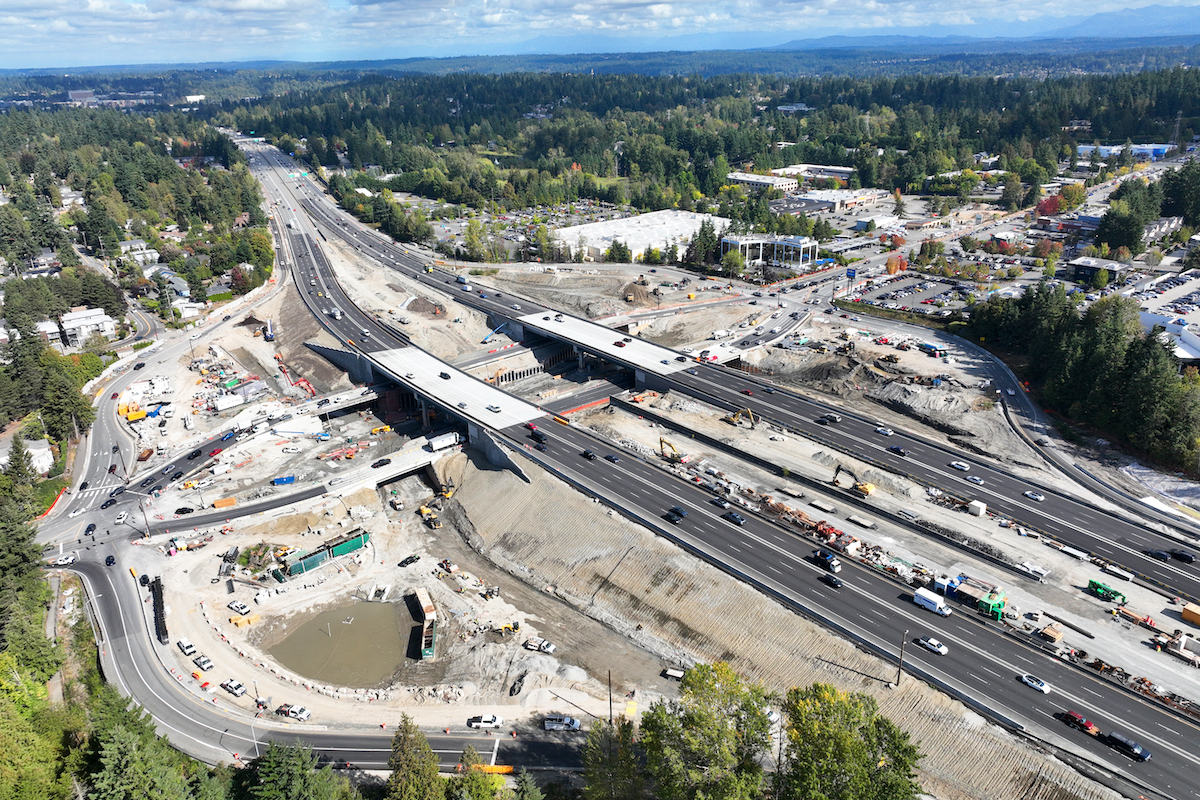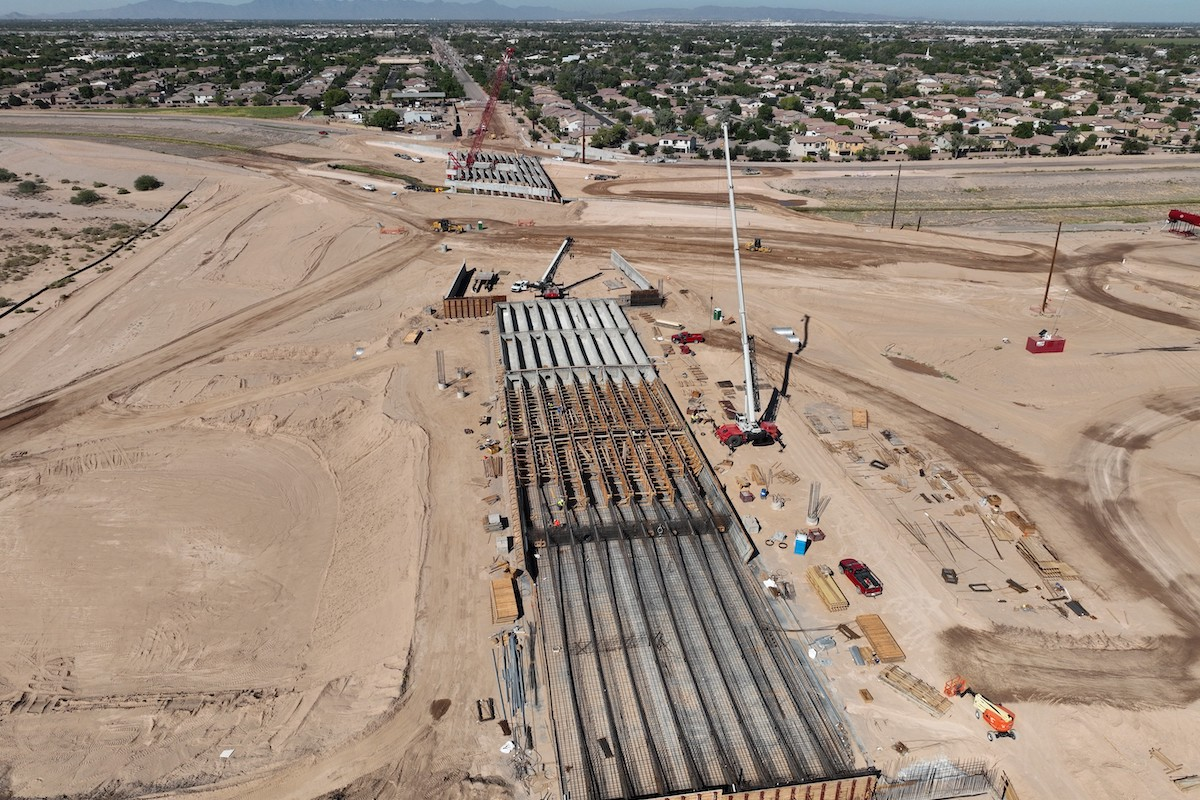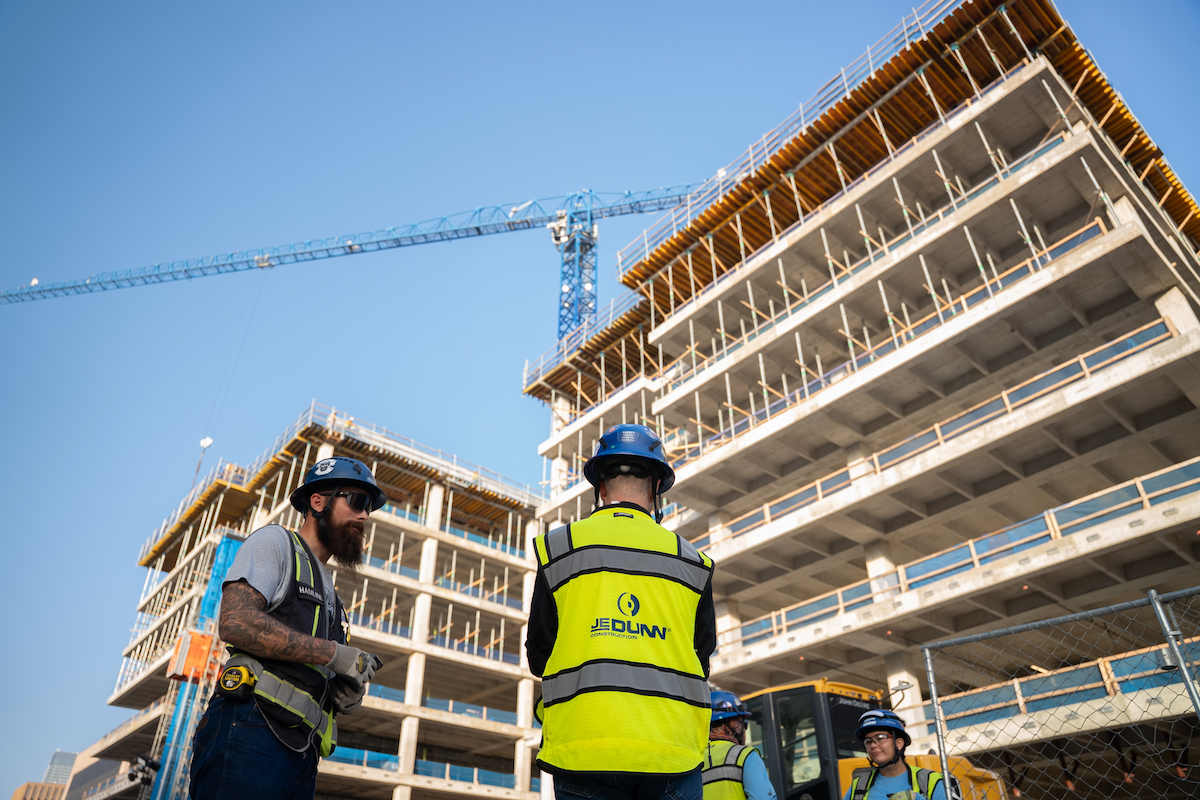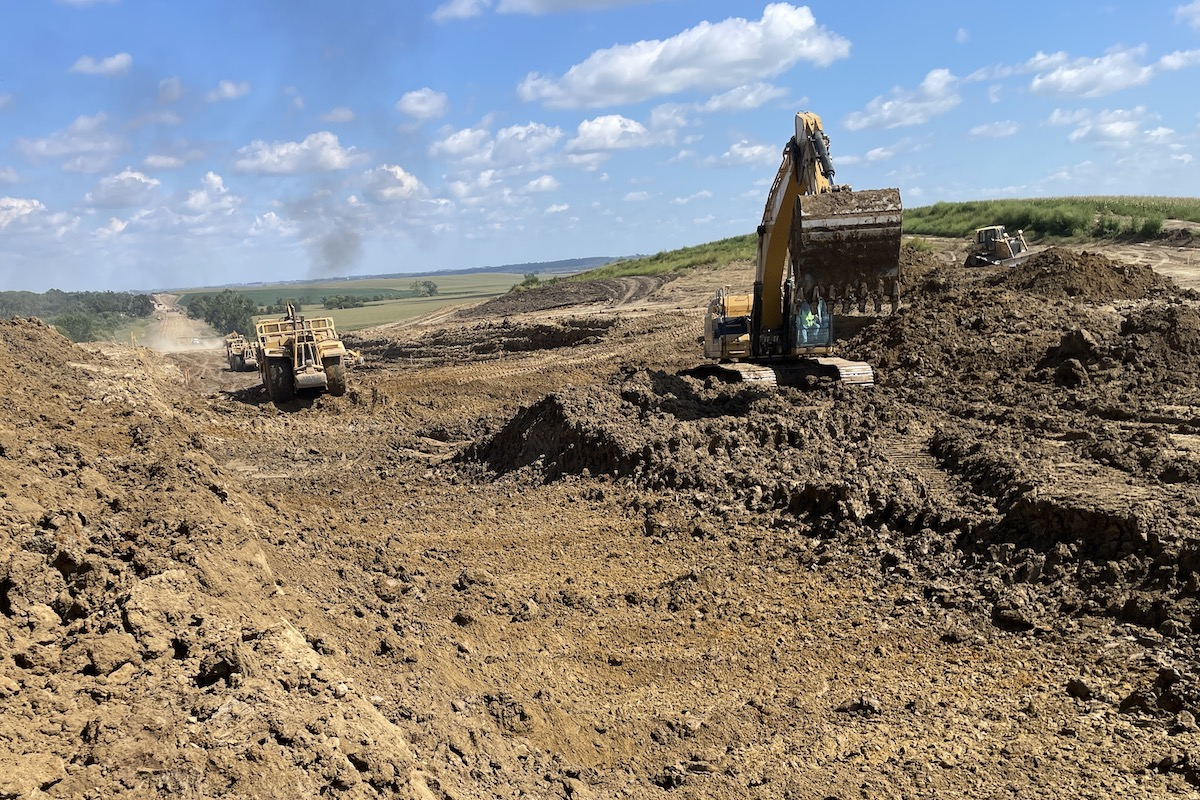One of the oldest original structures on the Pennsylvania Turnpike is being replaced.
Roughly 20,000 drivers who cross over the Beaver River daily via the existing heritage, steel deck bridge can anticipate having a new segmental bridge and a widened highway by September 2027.
The Keystone State’s multiphase Beaver River Bridge Replacement Project, approximately 30 miles northwest of Pittsburgh, Pennsylvania, is a total reconstruction of the Pennsylvania Turnpike (I-76) in each direction between Milepost 12 and Milepost 14.
Funded solely through toll dollars, it is the largest contract in Pennsylvania Turnpike Commission history, carrying a price tag of $269 million.
“The size of the contract primarily stems from the bridge type that we're building, the location that we're building it in, as well as it’s part of a total reconstruction package,” said Crispin Havener, Assistant Press Secretary for the Pennsylvania Turnpike. “We're rebuilding 2 miles of turnpike that's focused on the bridge, but also extends beyond the bridge.”

| Your local Trimble Construction Division dealer |
|---|
| SITECH Allegheny |
| SITECH Northeast |
The project consists of three bridge structure replacements, one culvert structure expansion, I-76 widening, city street reconstruction, and reconfiguration of the I-76 and SR18 interchange. The existing four lanes will be upgraded to include six 12-foot travel lanes, three eastbound and three westbound, with modernized 12-foot shoulders and 10-foot medians in each direction.
“Direct impact to our customers will be increased safety, a better ride, and better mobility, and will also enable our future maintenance to occur with minimal disruption,” Havener said.
The decision to replace the turnpike’s steel truss bridge with a cast-in-place concrete bridge speaks to broader trends in modern infrastructure development.
“The Pennsylvania Turnpike mission is to operate a safe and reliable customer value toll road system that supports not only national mobility but also commerce,” Havener said. “So, we're looking to enhance safety, looking to improve capacity throughout the system, and it got to a point where it was time to do this section.”

| Your local Trimble Construction Division dealer |
|---|
| SITECH Allegheny |
| SITECH Northeast |
Concrete cast-in-place bridges are known to offer enhanced environmental durability while reducing the footprint needed for pier construction. They are superstructures that can easily travel over natural hazards and landmarks, offering a flexible bridge design.
“From a historic standpoint, Pennsylvania for the most part — and especially around Pittsburgh — has always geared heavily towards steel,” said Josh Farley, Senior Engineering Project Manager, Pennsylvania Turnpike Commission. “Most of our existing structures are steel, and there's always been a tendency to use steel.”
“This kind of change to a concrete product ultimately has less maintenance, it's more resilient, the operating cost is less, and from a span arrangement, it actually was a little bit better fit than steel,” Farley added.
The new bridge is a segmental structure, comprised of cast-in-place concrete with post tensioning, using a balanced cantilever construction process.

| Your local Trimble Construction Division dealer |
|---|
| SITECH Allegheny |
| SITECH Northeast |
Spanning 1,645 feet in length, the bridge has five sections, soaring over the wide and steep valley, 200 feet above the Beaver River.
Fay, S&B USA Construction (Fay), a company specializing in design-build, value engineering, and accelerated construction delivery methods, will replace the single 60-foot-wide bridge with two 70-foot-wide bridges in each direction and will widen the adjacent highway. ALCM serves as the construction manager for the project and CDR Maguire as the lead design engineer.
“It's definitely different than most bridges,” said Katie Spear, Vice President of Marketing for S&B USA.
According to Spear, the concrete superstructure is built directly on the substructure in short segments using a traveling form to mold each segment. Once each segment is completed, the work shifts to the form on the other side of the pier table to keep the weigh-in balance.

| Your local Trimble Construction Division dealer |
|---|
| SITECH Allegheny |
| SITECH Northeast |
At a height of over 200 feet above the river, workers will use form travelers on pier tables to cast 22, 15-foot segments per pier before joining them together in a closure pour. A total of 176 segments will be cast to construct both bridges.
Farley said that the Beaver Valley terrain calls for unique solutions, not only due to the height of the bridge above the river but also because of the infrastructure below it. The location, and the access to it, are the project’s greatest challenges.
“The foundations we're building to span over Beaver River are partially in the river, and the access to get down there is down a couple of steep banks that we had to work our way through,” Farley said. “New river crossings don't come up too terribly frequently, so that makes it a little more unique here.”
The project crosses two different railroads, one on each side of the river, and a significant amount of the project’s work is within the Beaver River itself.

| Your local Trimble Construction Division dealer |
|---|
| SITECH Allegheny |
| SITECH Northeast |
The team established haul roads; cleared and built a half-mile-long road down the bank to the shore of the river; worked through permitting, establishing crossing with the railroad; and proceeded down to the riverside.
“It took us a long time to gain access down to the river,” Farley said. “Then once we were down adjacent to the river, we actually built causeways using rock out into the river to have a work platform to build the cofferdams and the piers.”
The team built piers up to the superstructure elevation using cranes to set forms, fly in rebar, and pour concrete sections anywhere from 20 to 30 feet high at a time.
Cranes used for pier construction included a Kobelco 2750 (275 ton), Manitowoc 999 (250 ton), Manitowoc 4100 (230 ton), Liebherr 1200 (200 ton), and a Link-Belt 248 (200 ton). A Grove RT600E (45 ton) and a Grove RT700E (50 ton) were also used on the project.

| Your local Trimble Construction Division dealer |
|---|
| SITECH Allegheny |
| SITECH Northeast |
A pier table, which is a strong, rigid component that ties the pier to the superstructure, was built on top of each pier. They then installed form travelers — sections of form work used for pouring concrete that move horizontally as work progresses to create the superstructure.
“We'll pour a 15-foot-long segment, and we'll advance the form traveler, pour the next 15 feet, advance the form traveler, and work out from the pier, really just out into space,” Farley said. “If you're looking at it in an elevation view, it'll look like a ‘T’ where we have the pier coming up, and then two sets of the superstructure going out each direction but not connecting to anything.”
Two exterior concrete walls and an interior concrete web connect the top slab and bottom slab.
“We have post-tensioning in the top slab, and as we get out to the center of the span, we put it into the bottom slab as well,” Farley said. “Then, as we work out from the first pier, and then we move over to the second pier, the segments will work towards each other. We'll have a closure pour to connect the two segments out at mid-span.”

| Your local Trimble Construction Division dealer |
|---|
| SITECH Allegheny |
| SITECH Northeast |
“We’ve been out here working on the project for two and a half years already, and we're just doing the first couple of pours of the actual segments,” Farley added. “In those first couple of years, part of the operation was assembling these form travelers in a storage yard, fitting them up to our specifications, and getting them prepared to actually put them in place and put them to use. They're rented and reusable, and they're customized at the same time.”
The Pennsylvania Turnpike Commission required a solution that enabled traffic to continue flowing throughout construction with minimal detours.
“The overall project has basically eight stages of traffic control, and we're right in the middle of it,” Havener said. “We accommodated traffic by shifting the alignment to about 175 feet to the north. So our existing turnpike can stay basically intact while we build this whole thing offline, and then we build new roadway to tie the two together.”
During the first two and a half years of this project, the team completed almost 2 million cubic yards worth of earthwork to prepare the 264-acre site.

| Your local Trimble Construction Division dealer |
|---|
| SITECH Allegheny |
| SITECH Northeast |
“We basically made a huge cut, moved the hillside, and built the new alignment,” Farley said. “We have a significant portion of that actually already paved in ready to tie into the bridge. So that was a big thing for us, keeping our mainline turnpike active and [having] our customers experience minimal travel impacts.”
The project is currently in stage four of the construction. The mainline Pennsylvania Turnpike lanes have been shifted southward to allow for earthwork, grading, and asphalt paving for the realignment of the roadway to meet the new river crossing structures.
Farley credits the team for their expertise in working on this type of superstructure.
“We've been fortunate; we have some experts who have done a lot of work on this type of bridge across the country that we brought in to be a part of our team,” he said. “They've been able to really help us avoid some of the pitfalls that are out there, but it's still a learning curve process for everybody involved.”

| Your local Trimble Construction Division dealer |
|---|
| SITECH Allegheny |
| SITECH Northeast |
Danish international engineering and architecture firm COWI, and Schwager Davis, Inc., a California-based design-build contractor, provided their expertise for the bridge construction.
“The most fun part of any job is the people that you get to work with, the team you get to build, and then go have good successes and achievements,” Farley said. “It’s a cool opportunity, and it's fun to be halfway into it.”
“All of our partners throughout this have been great,” Havener said. “There has been a lot of work done to get to this point and still a lot of work to go, but we're excited. We’re at the point where we're starting to see the future come to light.”
- Owner: Pennsylvania Turnpike, Middletown, Pennsylvania
- General Contractor: Fay, S&B USA, Pittsburgh, Pennsylvania
- Construction Manager: ALCM, Pittsburgh, Pennsylvania; Ryan Hurey, Project Manager
- Lead Design Engineer: CDR Maguire, Pittsburgh, Pennsylvania
- Key Subcontractors: COWI, Lyngby, Denmark; Schwager Davis, Inc., San Jose, California




